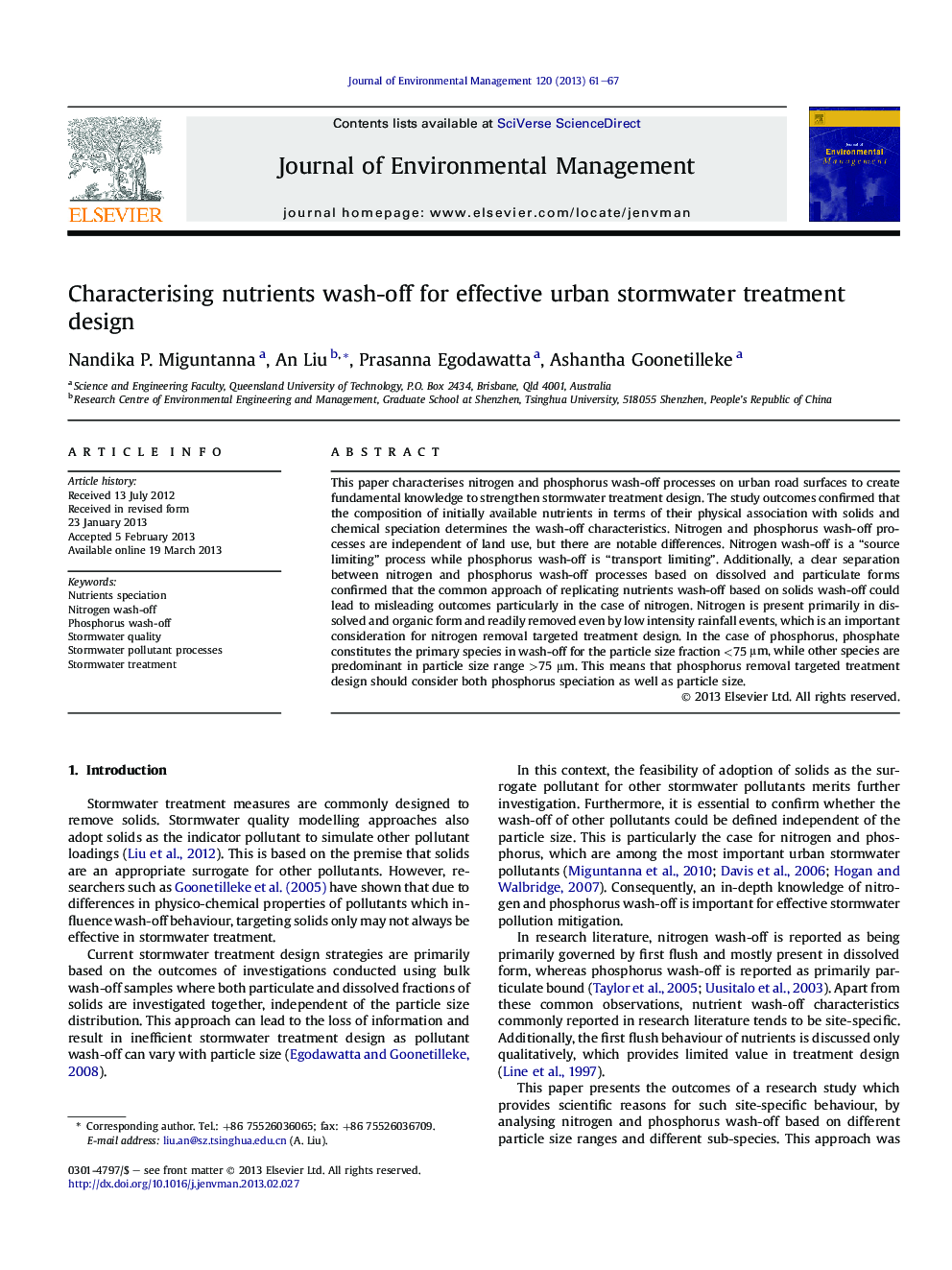| Article ID | Journal | Published Year | Pages | File Type |
|---|---|---|---|---|
| 1056052 | Journal of Environmental Management | 2013 | 7 Pages |
This paper characterises nitrogen and phosphorus wash-off processes on urban road surfaces to create fundamental knowledge to strengthen stormwater treatment design. The study outcomes confirmed that the composition of initially available nutrients in terms of their physical association with solids and chemical speciation determines the wash-off characteristics. Nitrogen and phosphorus wash-off processes are independent of land use, but there are notable differences. Nitrogen wash-off is a “source limiting” process while phosphorus wash-off is “transport limiting”. Additionally, a clear separation between nitrogen and phosphorus wash-off processes based on dissolved and particulate forms confirmed that the common approach of replicating nutrients wash-off based on solids wash-off could lead to misleading outcomes particularly in the case of nitrogen. Nitrogen is present primarily in dissolved and organic form and readily removed even by low intensity rainfall events, which is an important consideration for nitrogen removal targeted treatment design. In the case of phosphorus, phosphate constitutes the primary species in wash-off for the particle size fraction <75 μm, while other species are predominant in particle size range >75 μm. This means that phosphorus removal targeted treatment design should consider both phosphorus speciation as well as particle size.
► Composition of initially available nutrients determines nutrient wash-off processes. ► There are notable differences between nitrogen and phosphorus wash-off processes. ► Nutrient wash-off processes are independent of land use. ► Replicating nutrients wash-off using solids wash-off data could lead to errors.
